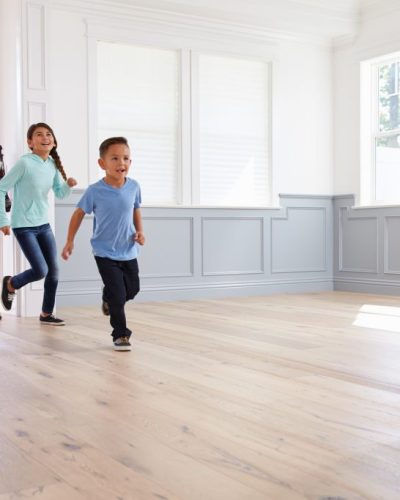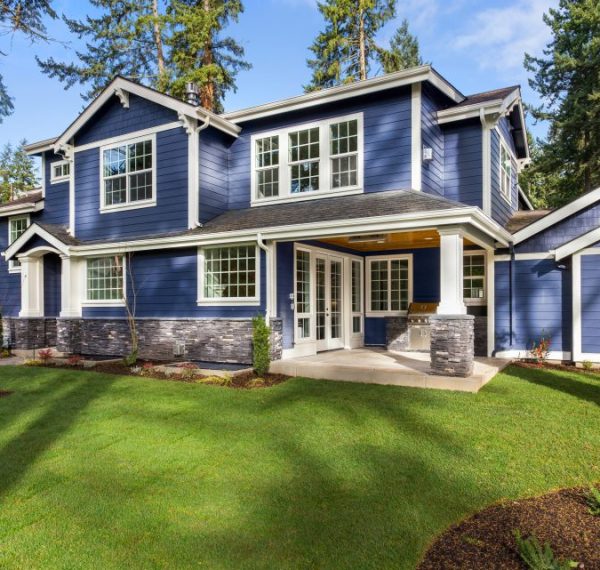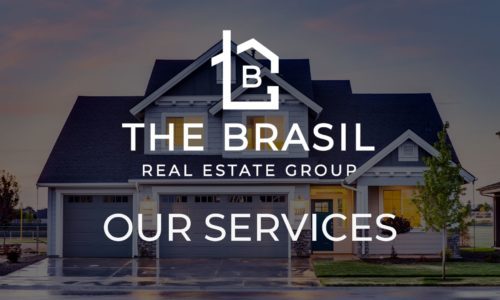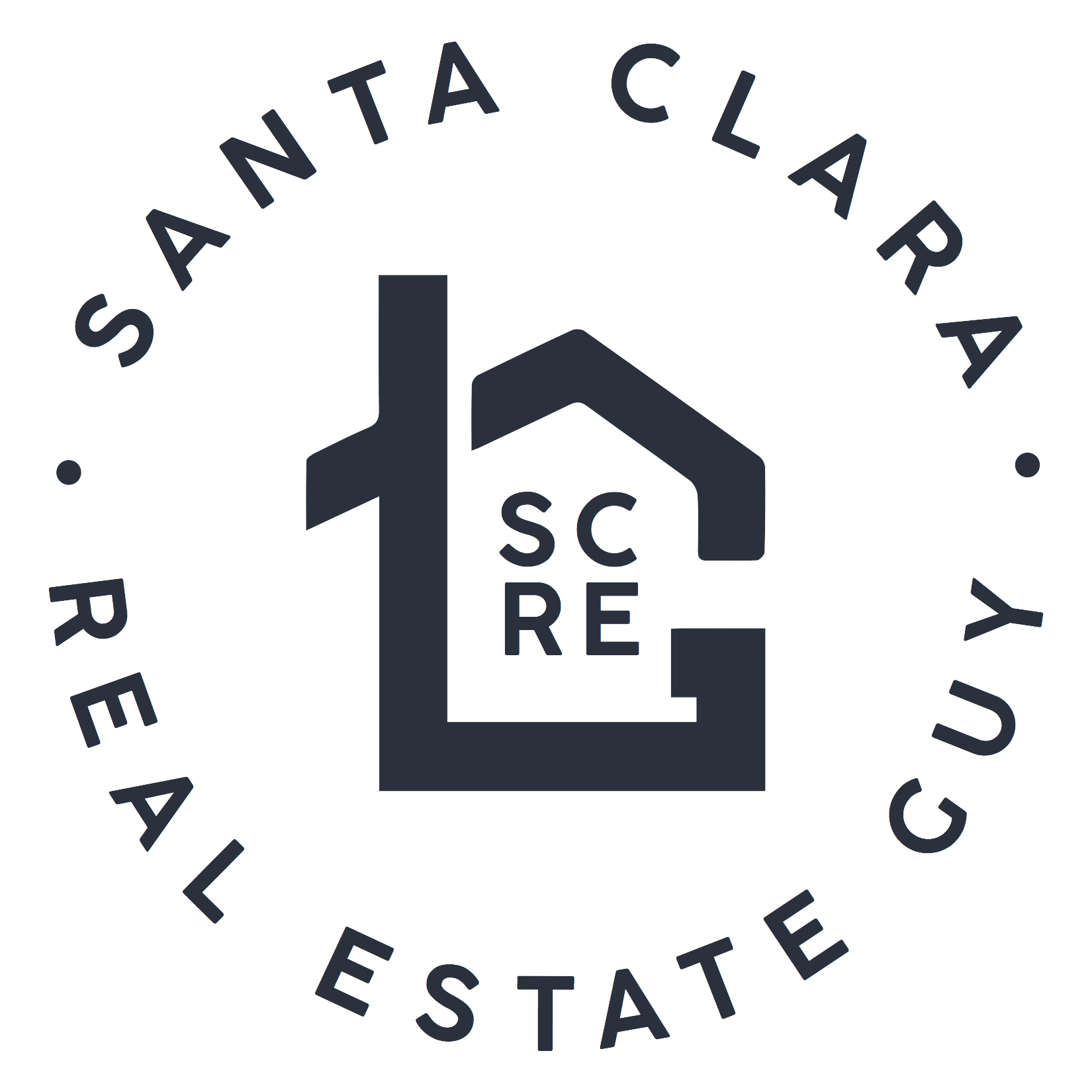How to Buy and Sell a Home at the Same Time
Are you looking to move to your next home, but are not sure how to navigate the process of buying and selling at the same time? You’re not alone!
Many homeowners face this challenge, but with the right strategy and guidance, it can be done. In this blog post, we’ll explore the options available to move-up buyers and provide tips on how to make the process as seamless as possible.
From timing your transactions to assessing your financing options, we’ll cover everything you need to know to successfully buy and sell a home at the same time.
Buying and Selling- What are Your Options?
If you’re a homeowner who has been thinking about upgrading or downsizing, the prospect of navigating the buying and selling process can be daunting.
Whether you’re wondering if it’s best to buy or sell first, or concerned about the cost and risks of owning two homes and having two mortgages at the same time, it’s understandable that you may have questions. Additionally, in a challenging market, you may be worried about the possibility of owning no home at all.
The good news is, with the right strategy and guidance, it is possible to successfully move to your next home. In this blog post, we’ll explore the options available to homeowners looking to move and provide tips on how to make the process as seamless as possible.

Typically, there are two main strategies homeowners use when making this change: they either buy a new home before selling their existing one or sell their current home and move into a rental or temporary residence until they find a new home. These options can come with their own set of risks and inconveniences.
Thankfully there is another solution available that can help mitigate some of these concerns. In this blog post, we’ll delve into the traditional strategies of buying and selling a home simultaneously, and then explore a third option that can provide a more streamlined and less risky experience for homeowners.
Option 1: Buying a Home Before You Sell Your Existing Home
Buying a new home before you sell your old one is the trickier of the two methods. While it’s not impossible, it does require more financial finagling. However, in some cases what prompts you to even consider moving is that you find your dream home early on in your search. If this happens to you, here are your options:
Use a Home Sale Contingency
The easiest way to deal with this scenario is by including a home sale contingency in any offer that you make. This contingency is part of your offer to buy your new home, which allows you a set period of time to find a buyer for your old home before you close escrow on your new home. If you can’t find a buyer in time, you may have the option to try to extend the contingency or to back out of the deal.
If this option sounds too good to be true it’s because, for the most part, it is. Home sale contingencies are not widely accepted by sellers or listing agents. Sellers don’t like them because they offer little-to-no reassurance that the buyer will actually be able to purchase the home. Also because of the fast-paced nature of bay area real estate markets, the feasibility of this strategy is limited to slow markets, or overpriced or less desirable homes that are sitting on the market.
You are free to include this contingency in any offers you make, but be aware that it negatively impacts the strength of your offer. In many cases, the seller may expect a higher price from a contingent sale offer. Seller’s are more likely to accept this type of offer if their home has been sitting on the market for a long duration or they like the price you are offering and are not in a hurry.
Most importantly for this strategy to work, the sellers must be confident that you will be able to pull off the sale of your home. Therefore the way it is presented to their agent must be done in such a way that it conveys the confidence that your home will sell.
The pros of this strategy are that there is very little risk to the buyer. If you are not able to sell your home and the purchase deal falls through, you might be out some fees for inspections or an appraiser and lost time and energy, but that is about it.
The cons are that it’s rare that you will be able to convince the seller to accept your offer, and therefore you might lose your dream home to a better offer.
- Get a Bridge Loan or Home Equity Line
A bridge loan is another option to help you deal with the financial strain of buying a new house before you sell your old one. Bridge loans are short-term loans that allow you to pay off the mortgage on your own home so you don’t have to carry that cost. Then, when your home sells, you’d use the proceeds from the sale to pay off the bridge loans.
In order for this option to work, you have to have a considerable amount of equity in your existing home, and meet the lenders requirements to be able to purchase the new home.
That being said, bridge loans are a gamble. These loans often come with strict terms and high-interest rates. In order for a bridge loan to work, both transactions need to be completed. If there is a problem with the sale of your existing home, you’ll still be responsible for finding the funds to pay back the bridge loan on time.
A home equity line of credit (HELOC) assumes that you have enough equity in your existing home to be able to qualify for your new property. The downside with this strategy is that it takes time to set up and open HELOC and you may not have that much time to make an offer on that dream home.
In order for this strategy to work, you have to prepare in advance and have the HELOC approved. Also, lenders will not approve a HELOC on your home if you are selling it. So you will need to open up the HELOC before your home goes on the market.
Assuming your HELOC is approved, you then make the offer on your new home, without a contingency to sell your existing home, and once your offer is accepted you draw the funds from your HELOC for the purchase of your new home. At this point, you can list your existing home to be sold.
There are a lot of what if’s in these two scenarios, such as having enough equity in your home, and being able to qualify for the new home. Here are the pros and cons of these strategies.
Pros: Being in a position to make a clean offer without a sale contingency clause, therefore vastly improving the quality and strength of your offer.
Cons: The risk associated with these scenarios are the typical risk you assume when you buy before you sell. If your existing home doesn’t sell or has a hard time selling then financially you may place yourself in a difficult situation.
Had you counted on your home selling at a certain price and if it falls short of that price you may need to dip into other accounts, take out a higher loan, or sell other assets to make up the shortfall.
The key here to limiting your risk is working with an agent who understands your home and your home’s market, and can give you an accurate assessment of the value, sales costs, and additional costs you might incur such as capital gains.
In either case your first steps are to always speak with a Realtor who is knowledgeable, they will help you understand the market and your home’s value. Ultimately a local real estate expert should be consulted to help you determine the best plan to achieve your objective.
Option 2: Selling Your Existing Home Before Buying a New One
This option allows you to submit offers on new homes without having to worry about using a home sale contingency or taking out a new loan.
Selling your old home before you buy a new one can be a more financially secure option. This way, you’ll know exactly how much money you have to spend on a new property. However, this method is not without its inconveniences and risks. As an example, you may have to deal with the stress of moving twice within a short period of time.
Here are the different strategies you can use to buy a new home after you have sold your existing home.
Renting Back your Previous Home
A rent-back is exactly what it sounds like. You rent your home back from the buyer who is now the new owner. In our market, it’s not uncommon for a seller to request a rentback and buyers generally accommodate.
A 30-day rent back for a seller from the close of escrow date can be typical of a transaction. Once the home closes escrow, the seller can stay up to 30 days. These rentback scenarios need to be negotiated upfront when you accept the buyer’s offer. Its very common for the buyer to throw in a free rentback with their offer, and request a security deposit to be held in escrow.
Although convenient, 30 days is hardly enough time for the seller of the home to find a new home, close escrow, and then move into that home. The challenge here is that most rentbacks can not extend beyond 60 days. There is a provision for the buyer’s loan that they need to move into the home within 60 days in order for the home to be considered a primary residence. Also, buyers generally want to move into their home soon so anything beyond a 30-day rentback may not work for all buyers.
If you are able to negotiate a 60-day rentback, it does give you some time to find a new home and close, but depending on the market that still may not be enough time. Especially if your new home requires updating before you move in.
Pros: Financially more secure since you know what your existing home sold for. Ability to make clean and non-contingent offers while shopping for your new home. If found quickly you can complete just one move directly to your new home from your old home.
Cons: May not be enough time to find a new home, close escrow, and move into your new home. Depending on the market prices could be climbing fast making your new home more expensive than you planned.
Finding a Short-term Rental before You Buy Your Home
Moving into a short-term rental means moving twice, but provides you the time to find the right home.
One of the challenges that sellers face in this scenario is finding the right rental. People who have pets may find it hard to find a rental that works for their family. Another issue is short-term rentals in our market are not very common, you may find yourself having to sign a year lease that you may have to break.
With any option where you sell first before buying, this can become risky in a heated real estate market where prices are appreciating rapidly. After you sell you may find yourself in a position of having to buy a home immediately and compromising on the very aspects that motivated you to move in the first place.
Pros: You will have more time to find the right home. Ability to make cleaner and more competitive offers that sellers will consider.
Cons: Moving two times instead of one. Could be challenging to find the right rental that works for you and your family. The risk of the market appreciating while you are home shopping, and pricing you out of the home you were hoping to be able to afford.
As you can see neither of these options is ideal, and each carries a significant amount of risk. This is why many people just stay in their existing homes or try to remodel.
* Total commission 4% including buyer side agent commission of 2.5%, offer varies by value of home.
Other Options:
Now there are other solutions out there that offer more convenience and are less risky.
These solutions allow you to buy the new home without taking out a HELOC or bridge loan, and offer you the convenience of shopping for your new home while you are still living in your existing home.
Let me explain how these options work so you can understand the pros and cons.
Getting a Direct Cash Offer on Your Home:
This is the simplest solution that will allow you to sell your home right before you purchase your new home, releasing the proceeds from your home to be used as a down payment on your new home.
The sale would be timed after your offer to buy your new home has been accepted. Also, this option clears any loan you had from your previous loan enabling you to maximize your purchasing power.
This option will also provide you with the option to remain in the home you just sold for up to 30 days after the close of escrow so that you can move directly into your new home.
Prior to buying your new home, we will have your home appraised and estimate its current market value. We will need to have an inspection done on the home to make sure there are no major defects and to assess the condition and costs involved in repairing the home.
Once the property’s market value has been assessed you will be eligible for a direct cash offer. A direct cash offer will be around 10-15% less than the market value. One of the advantages of a direct cash offer is you will not need to pay any commissions but will be responsible for the title and escrow fees when you close which can be around .5%.
The pros of this option are it’s simple and has very little risk. You can close escrow quickly in 8 days or less. You will be able to remain in the home which you have just sold for 30 days after closing to allow you to move into your new home.
Also, you will have the freedom to use any lender for your new purchase. You’ll save costs without having to pay commissions and don’t need to go through the costs and process of repairing, updating, and staging your home to sell it.
Lastly, you will avoid the traditional sales process which can involve weeks of showings, open houses, and potentially risky escrows.
The downside is you sell your home without it going to market, and could potentially be receiving a lower offer than what you could have received if you listed the home.
Trade-In with Sale Price Guarantee:
Similar to the option above, but instead of selling before you purchase your new home you use a special lender that will finance your purchase as if you sold.
The lender will approve you based on your equity in your new home, and use an estimated appraised value of your existing home. This is the price that you are guaranteed to receive for your home. You will still need to pay agent commissions and closing costs.
This option will allow you to make an offer on the new home without any contingencies and can close as early as 8 days (expedited closes faster than 21 days have a 1.5% fee).
Once you have closed on your new home you will need to have your existing home listed on the market within 10 days. The benefit of this program is that you receive the entire proceeds based on what your home sells for.
This program stipulates that you must sell within 90 days. If you do not sell within 90 days, you will receive the guaranteed price minus any costs (fees, closing costs, home prep fees, inspections, and realtor commissions, etc.).
Pros: Again you will be able to make a non-contingent offer on your new home and remain in your existing home, so you would only need to move once. You will have a guaranteed price for your home, and an opportunity to sell your home at market value.
Cons: In order to take advantage of this program you are required to use the program’s lenders. Your loan qualification will be based on the guaranteed offer price and may limit your purchasing power toward your new home. You will be paying two mortgages while you continue to own your original home. The fee to use this program is 1.2% of your home’s value.
Our Services
- Matterport 3D Virtual Tour
- Schematic Floor Plan
- Professional HDR Photography
- Complimentary Home Staging
- Value-Add Home Updates
- Aerial Photography
- Drone Footage
- Property Video
- Property Webpage
- Email Marketing
- Print Marketing
- In-House Design Services
- Project Management
- Preferred Contractors & Vendors
- In-Depth Construction Knowledge
- Open Houses
- Syndication to 100’s of Websites
- Twilight Marketing Photos
- Pre-Inspections
- Property Inspection Management
- Home Security and Monitoring
- Strategic Pricing Knowledge
- Social Media Advertising
- Offer Presentation & Negotiation
- Personal Disclosure Review
- Transaction Management
Conclusion:
The process of moving to a new home and selling your existing home has never been easy.
The traditional ways of buying and selling a home burden the homeowner with varying degrees of risk and inconvenience.
These new solutions attempt to solve these inherent issues and make it easier for the homeowner to move.
The key to any homeowner faced with this challenge of moving and selling a home is to talk to a professional realtor in their local market. An agent who has an in-depth knowledge of your market, and the experience and knowledge of the different options and programs available will be able to help you explore the solution that would best suit your needs.
If you are considering moving, and are faced with this challenge, please contact me to set up a free consultation to discuss your situation and what options are available to you.
Contact Me Today
Have a question? Interested in setting an appointment to talk about your real estate plans? Contact me today.
-
VINICIUS BRASIL, Realtor
Keller Williams - The Brasil Group
19900 Stevens Creek Blvd #100
Cupertino, CA 95014 - 408.582.3272
- Schedule a meeting








